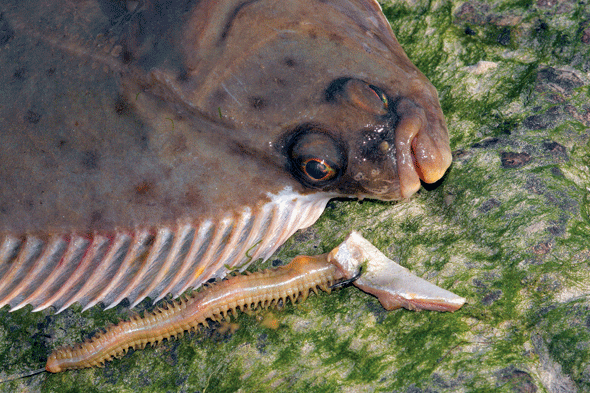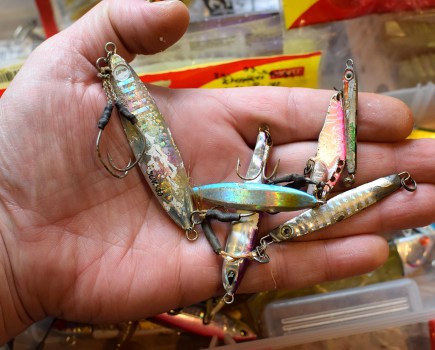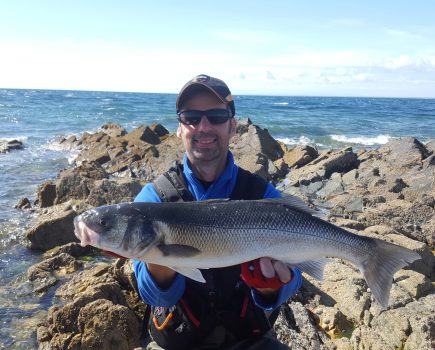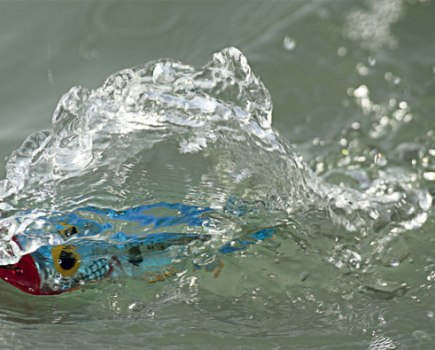When all else fails to bite in early season you can rely on a feisty flounder to rattle your rod top. Here we show you where to look and how to catch these flatfish…and then ask Gareth Griffiths how he fishes for them at Arnside, Cumbria
FUN OF FLOUNDERING
A few sea anglers turn up their noses at the prospect of fishing for flounders, but this chunky flatfish fills the gaps in the shore angler’s year providing sport when either other fish are absent, small or won’t even bite.
Once you accept that the fighting prowess of the species is less of an angling challenge than getting it to take the bait, the flounder is a worthwhile target and a real bonus fish often caught from more sheltered venues.
A major match angling species in many river estuaries and beaches adjacent to major estuaries, the flounder is possibly targeted by more anglers nationally than all but bass and cod.
HOOKS THAT HOLD
These tend to be small with size 2 and 4 ideal, while a bigger 1/0 hook is preferred if using a large peeler crab bait, because it allows better presentation, or if a bigger bonus species is likely to be caught while flounder fishing.
Soft-wire blued patterns are used by many match anglers and those wishing to return their fish alive because they are easier to remove. You will find that the smaller size 6 hooks are easier to remove with a disgorger.
BAIT SELECTION
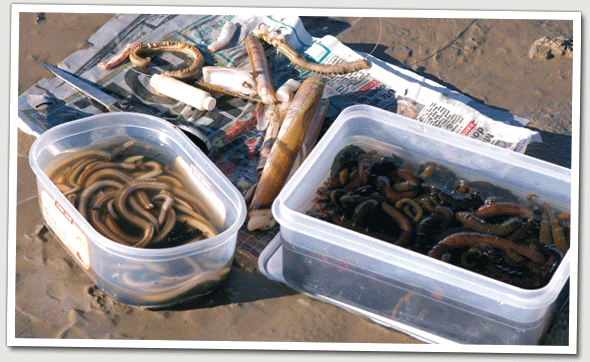 Bunches of tail-wriggling small king, harbour or white ragworms are favoured for catching flounders, despite the fact that many venues are so murky there is little chance the fish can see the bait.
Bunches of tail-wriggling small king, harbour or white ragworms are favoured for catching flounders, despite the fact that many venues are so murky there is little chance the fish can see the bait.
It is the movement and vibration of those wriggling tails that are so deadly and they combine with the number one flounder attractor, scent.
Nothing beats fresh peeler crabs for flounders on many venues in spring. Other baits rarely survive the attention of bait-robbing crabs long enough for a flounder to find them. Top bait in many regions is a lugworm or ragworm tipped with a small sliver of fresh mackerel. On some beaches shellfish catch flounders when a storm dislodges the contents of a sandbar onto the inshore shallows with razorfish, clams and cockles top of the menu.
While various ragworms are major baits in an estuary, lug often produces better fish from storm and surf beaches.
THE ULTIMATE BAIT
White rag is the king flounder bait, deadly on many venues at times other than spring, especially in clear water. Generally the smaller cat white ragworms are better than the larger snake white rag.
SPOTTING BITES
A bonus of flounder fishing is that it often all happens in a sheltered estuary and the lack of breaking waves allows the rod tip to be placed low to help spot bites. These can be pronounced or very subtle movements of the rod tip.
Fishing a slack line is a favoured tactic so that the fish feel little resistance when they take the bait, although even with a slack line a positive bite can be detected with ease in calm conditions.
Tricks of flounder fishing include moving the bait regularly to explore the ridges and gutters. Releasing the line from the spool to allow the line to bow and the bait to flutter is a worthwhile ploy.
Flounders are a shoal species and catching more than one on a rig is common so when a bite is spotted you must sit on your hands, striking at flounders is not playing cricket.
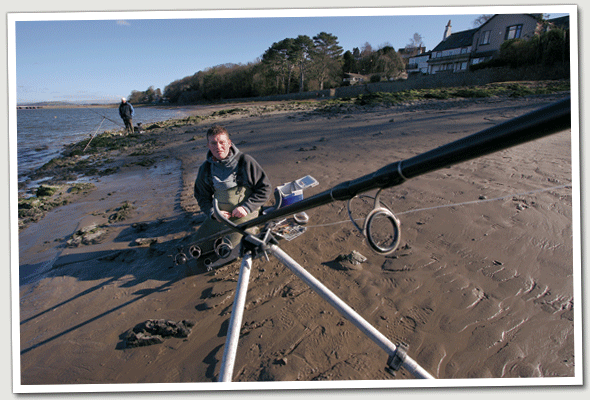
A SPRING PRIZE
Accurate casting is a big advantage to the estuary angler because flounders have some predictable habits. They like hugging the gutter line between beach and sand and those that find it with an accurate cast will catch the most fish.
On surf beaches hot areas are just under the main breaker where the sand is gouging out shellfish or the third wave flat inside the big breaker where the disturbed food comes to rest.
A real flounder hot spot is the slack water side of the end of a groyne because
flounder will pass close to the end to get around the obstacle.
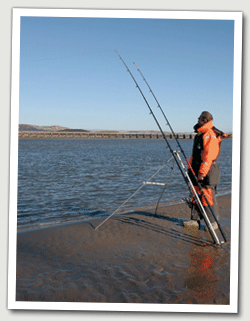 WHAT GEAR?
WHAT GEAR?
Bass or estuary rods are a favourite for flounder fishing because they allow the use of light lines down to 10lb and also show bites clearly.
The continental long rod/fixedspool outfit is growing in popularity for this type of close-range fishing, which is more about finesse than long-range sport.
Favoured rigs tend to be leggy monofilament paternosters to present baits over the widest area of sea bed, handy when fishing the surf to help increase the chance of putting a bait where the natural food is being gouged out or being pushed by the waves. Some anglers also favour booms because they allow the tangle-free use of lighter snoods.
Beads, sequins, small blades and spoons are all part of attracting flounder, along with floating popup beads used to raise the baits away from crabs or to increase bait movement by making them more buoyant and easily moved by the tide. Plastic beads can be used to anchor baits on the sea bed.
BEST VENUES
Shallow muddy estuaries are the standard habitat for flounders, although they are also caught from beaches outside the estuaries in the open sea.
Long expanses of sand or mud usually fish best during the flooding tide and groundbaiting with used bait can help to lay a trail towards your baited hooks as you retreat the flooding tide.
Flounders can be caught at extremely short range, even as close as ten yards on some venues. Look for the joint between beach and sand or the ledge where the water deepens because flounders use them as pathways.
THE LIFE OF FLESUS
The flounder, Platichthys flesus, is a right-eyed flatfish although left-eyed specimens are not that uncommon. It’s an estuary fish capable of surviving in part freshwater and therefore having its own niche in the food chain.
Once described as the most prolific sea species, the flounder is now less common on some venues where it has been an easy target for pot bait by commercial fishermen fishing for crabs and whelks.
Widely dispersed around the UK and often a novice sea angler’s first fish because it hugs the shoreline and you don’t need to cast huge distances to catch one. It’s a fact that a few tournament casters have never caught a flounder.
Identification points are the square cut tail and the rows of bony tubercles at the base of the dorsal and anal fins.
Not so good for eating as other flatfish, it is mostly returned alive by anglers although its survival rate may be less than many conservationists think.


